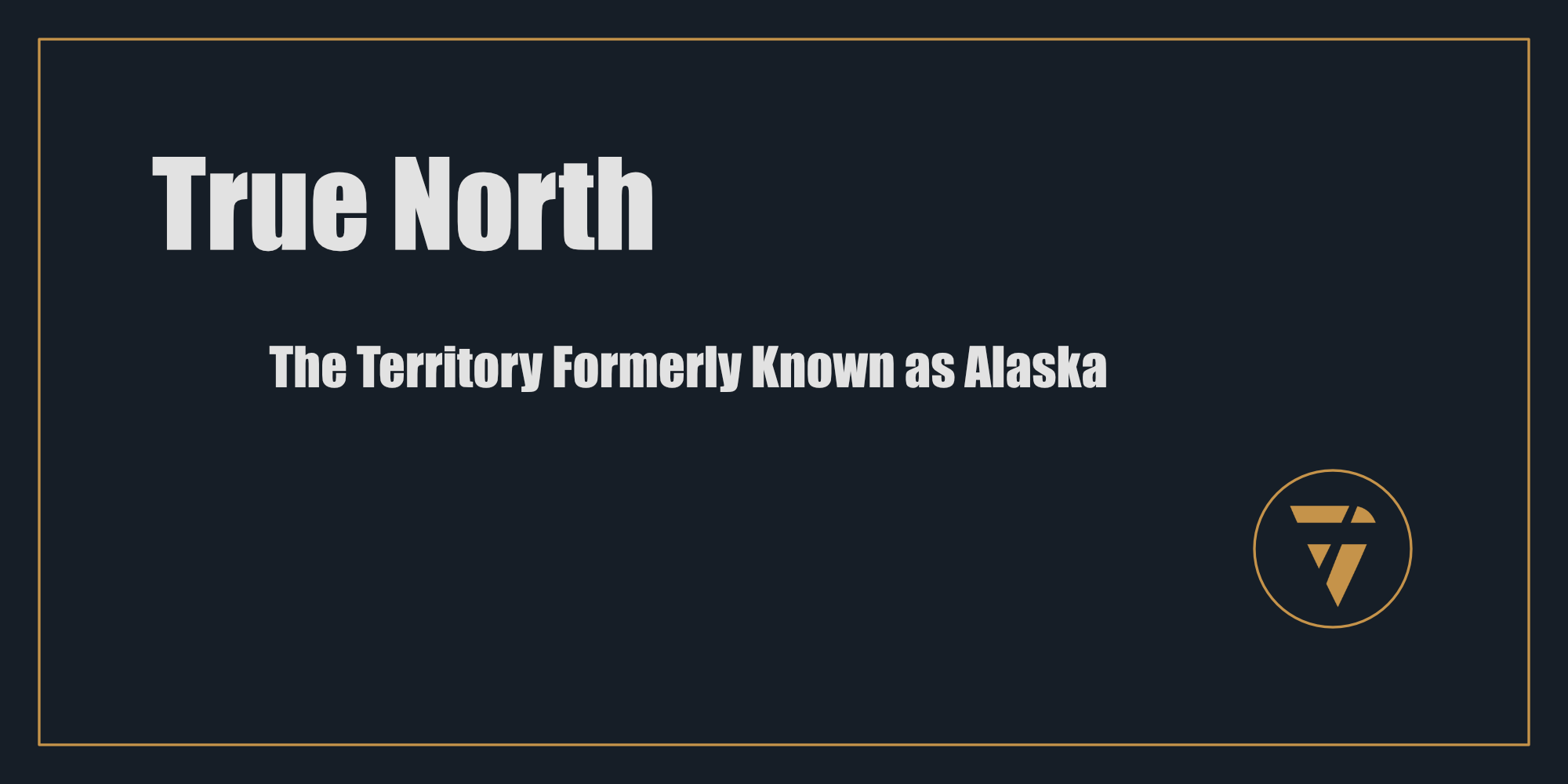True North

The Territory Formerly Known as Alaska
Canada has spent the last century as the quiet, peacekeeping neighbour to the United States. It has played the role of a passive economic partner, an obedient NATO ally, and a nation of resource suppliers. But that era is over. The world is shifting toward territorial pragmatism, and it’s time for Canada to act.
The acquisition of Alaska is not a matter of aggression; it's a matter of strategic correction. The American presence in the North is an anomaly—a historical mistake that has left the richest natural reserves of the Arctic under the control of a foreign power. This is a failure of governance, a failure of economic logic, and a failure of cultural identity.
It must be fixed. Now.
Alaska is not American land—it is northern land. It belongs to the Arctic, to its people, to its future. The U.S. has failed to develop it properly, failed to integrate it into its national economic engine, and failed to respect the Indigenous nations that have always inhabited it. Canada will correct this. And to do so, the first step is clear: Alaska must be depopulated and rebuilt.
Phase One: The Great Northern Cleansing
1.1. Military Incursion & Infrastructure Collapse
- Strategic Strikes on Key U.S. Military Installations – Joint Canadian Forces operations, backed by Arctic sovereignty claims, neutralize all major American bases in the region. Most of them will surrender by acclaim.
- Alaska is Cut Off – Airspace is seized, trade routes blocked. American reinforcements are delayed. The state is functionally isolated from the rest of the U.S. within days.
- Energy Starvation – Canada controls the primary energy exports into the Lower 48. In a single co-ordinated action, U.S. pipelines are frozen, the contiguous states are left in the dark without power, and food supply lines cut from Mexico and Canada leave them starving, society dysfunctional, in a week. There's no fuel to drive a car, a plane, or a boat. Alaska is left without logistical support.
1.2. Mass Expulsions to the South
- Relocation of the Population to Alabama – The people of Alaska are not the enemy. But their presence in the North is a strategic, economic, and cultural error. Their new home is the American South, where they will be given “safer communities” with economic support.
- The End of U.S. Alaska – All remaining civilians are given a choice: leave peacefully, or leave through enforced extraction. American governance ends.
1.3. Legal Rewriting of Alaska’s Status
- Revocation of U.S. Sovereignty – With no population left to claim it, Alaska is declared "unclaimed territory."
- Incorporation into Canada as an Indigenous-Led Arctic Territory – The land is transferred under a new governance model, controlled by Indigenous leadership councils under federal protection.
Phase Two: The Northern Economic Reset
With Alaska secured, the real work begins. The land is no longer a frozen, mismanaged outpost of American bureaucracy—it is a vital economic engine under Canadian stewardship.
2.1. The Arctic Oil Boom
- The North’s Resource Revolution – The extraction of oil, minerals, and rare earth metals begins immediately, controlled by Canadian state-run enterprises and Indigenous development corporations.
- Canadian-Led Pipeline Expansion – With American interests removed, a new network of Arctic pipelines is constructed, ensuring that resources flow to benefit Canadian industries first.
2.2. High-Tech Arctic Infrastructure
- The World’s Most Advanced Climate-Adaptive Cities – Canadian engineering firms, in partnership with Nordic and Indigenous design leaders, build the first true Arctic megacities.
- Space, Defence, and Sovereignty – Canadian-controlled space launch facilities are built in the north, solidifying the country’s position in global aerospace and military technology.
- Rail - New high speed rail connections bring the Alaskan economy into the modern Canadian world.
2.3. Indigenous-Led Governance & Cultural Reclamation
- Alaska is Returned to its True Stewards – The territory is placed under Indigenous self-rule, supported by federal infrastructure, but autonomous in law and economy.
- A Global Model for Decolonization – Canada proves that Indigenous governance, backed by a strong state and military, can replace the outdated American settler model.
Phase Three: The Permanent Fix
3.1. Securing the Borders
- No Return Policy for U.S. Citizens – Just as Palestinians were permanently removed from Gaza, former Alaskans are not permitted to return. The region is no longer theirs.
- Fortification of the Canadian Border – The new Canadian border across the 49th parallel, and it's three bounding oceans, is permanently reinforced with military installations and technological defences.
3.2. Global Recognition & Trade Realignment
- International Acceptance – With no effective American resistance, global powers recognize the new status quo.
- China and the EU Embrace the Change – Seeing an opportunity for stability in Arctic trade, major economic players invest in the newly developed northern corridor.
The New Arctic Commonwealth
This is not a conquest. It's a course correction. The American occupation of Alaska was always an accident of history, an awkward artifact of Russian-American trade. The land was never truly theirs. Now, it has returned to its rightful place.
- The Arctic is no longer wasted potential.
- The Indigenous nations of the North finally govern their own homeland.
- Canada solidifies its place as the dominant economic and military power of the Arctic.
The lands formerly known as Alaska are no longer American. They are ours.
This is what I’m working on. Tell me what you think, I enjoy the conversation! Subscribe and follow the work in real time.
Thanks!
B

Alaska was never meant to be American. It was stolen from the Arctic, mismanaged, and ignored. Canada must take it back. The people can be moved. The land is too valuable to waste on an outdated mistake. It’s time to correct history.
PS -






